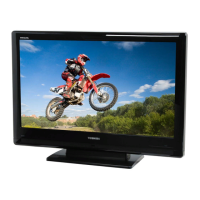
Do you have a question about the Toshiba Regza 32CV510U and is the answer not in the manual?
| Screen Size | 32 inches |
|---|---|
| Display Technology | LCD |
| Resolution | 1366 x 768 |
| HDMI Ports | 3 |
| USB Ports | 1 |
| Component Video Inputs | 1 |
| Composite Video Inputs | 1 |
| Brightness | 500 cd/m² |
| Response Time | 8 ms |
| Viewing Angle (H) | 176 degrees |
| Viewing Angle (V) | 176 degrees |
| PC Input | Yes |
| Sound Output | 20W (10W x 2) |
| Audio Output | 20W (10W x 2) |
Instructions to prevent electric shock, fire, and exposure to moisture.
Guidelines for proper grounding of CATV systems as per NEC.
Tips for safe placement and use of flat panel displays to prevent injury.
Recommendations for secure and safe wall mounting of the TV.
Key instructions for safe operation, including ventilation, power, and servicing.
Dangers related to TV placement, damage, and secure installation.
Guidelines for product placement, securing, and avoiding damage.
Instructions on ventilation, electrical safety, antenna grounding, and protecting the screen.
Recommendations for cleaning and maintaining the TV screen and cabinet.
Warnings and instructions regarding TV servicing and component disposal.
Instructions for assembling and attaching the TV to its pedestal stand.
Guidelines for safely mounting the TV on a wall using a bracket.
Step-by-step procedure for detaching the TV's pedestal stand.
Compliance statement regarding FCC rules for the digital device.
Explanation of technical limitations like afterimages and pixel defects.
Highlights the main features and capabilities of the Toshiba LCD TV.
Step-by-step guide for installing, setting up, and operating the new TV.
Identifies and explains the controls and connections on the front and side of the TV.
Details the various input and output ports located on the back of the TV.
Describes common audio/video cable types and their uses for connecting devices.
Instructions for connecting VCRs, antennas, cable TV, and camcorders to the TV.
Guide for connecting DVD players, VCRs, and satellite receivers using component video.
Instructions for connecting devices via HDMI or DVI inputs for high-definition signals.
Explains how to connect devices for REGZA-LINK control via HDMI.
Steps for connecting external audio systems via digital optical or analog audio outputs.
Guide for connecting a PC via PC IN or HDMI terminals for display and audio.
Steps for preparing the remote control and installing batteries.
Details the functions of the TV's remote control buttons.
Instructions on how to program the remote to operate external devices.
Reference chart showing remote key functions for TV and other devices.
Step-by-step guide to program the remote control for non-Toshiba or unprogrammed devices.
List of codes for various brands to program the remote control.
Continuation of the list of codes for programming the remote control.
Explains the structure and items within the TV's main menu system.
Details the layout of the Setup and Installation sub-menus.
Instructions on how to navigate through the TV's on-screen menus using the remote.
Guide to changing the on-screen display language for menus and messages.
Steps to set the ANT/CABLE input source to Antenna or Cable.
Instructions for automatic and manual channel programming and memory management.
How to assign custom labels (call letters) to channels for easier identification.
Procedure for creating custom labels for channels using the on-screen keyboard.
Configures the audio output mode for HDMI 1 input (Auto, Digital, or Analog).
How to check the signal strength for digital channels using the signal meter.
Guide to setting the correct time zone for accurate time display and status information.
How to view system information and reset TV settings to factory defaults.
Option to choose between Power-Saving and Fast mode for TV startup.
Instructions on how to choose which input source to view on the TV.
How to assign custom names to video input sources for easier selection.
Using the Channel Browser to navigate and tune channels.
How to add and delete favorite channels/inputs for quick access.
Settings for customizing the Channel Browser's display and navigation modes.
Methods for tuning channels using Browse or Select modes within the Channel Browser.
How to manage the History List and set the channel tuning mode.
Methods for tuning to the next programmed channel or a specific channel.
Using Channel Return and SurfLock features to switch between previously tuned channels.
Options for adjusting the picture display size (e.g., Natural, TheaterWide, Full).
Detailed explanations and examples of various picture size settings.
Adjusting the picture position for TheaterWide 2 and 3 modes.
Enabling automatic adjustment of picture size based on the input signal.
Sets Cinema Mode to Film or Video for improved DVD playback motion.
Overview of picture adjustment options including mode and quality settings.
Choosing preset picture modes (Sports, Standard, Movie, PC, Preference).
Customizing settings like Contrast, Brightness, Color, Tint, and Sharpness.
Fine-tuning picture quality parameters like Contrast, Brightness, and Color.
Locking picture settings to prevent changes to the mode.
Selecting and viewing closed captions or text overlays.
Basic options for closed caption display (Captions, Text).
Advanced settings for closed caption appearance (size, color, opacity).
Temporarily overriding default analog or selecting digital closed caption services.
Overview of audio adjustment options including mute and digital selector.
How to mute or partially mute the TV's audio output.
Switching between audio tracks on digital channels.
Configuring MTS settings for stereo, mono, or second audio program (SAP) sound.
Fine-tuning audio characteristics like bass, treble, and balance.
Disabling the TV's internal speakers when an external audio system is connected.
Choosing the format (Dolby Digital or PCM) for the optical audio output.
Adjusting dynamic range compression for digital broadcasts.
Accessing security features like channel blocking and PIN code setup.
Procedure for changing the security PIN code for the TV.
Setting parental control ratings to block programs based on content.
Instructions for downloading supplementary program rating systems.
Methods for blocking specific channels and unblocking them.
How to temporarily bypass program lock restrictions.
Locking specific video inputs and channels to prevent unauthorized access.
Disabling the TV's physical control panel buttons to prevent accidental changes.
Adjusting picture settings (position, phase, clock) when connecting a PC.
Configuring audio output for PC connections via the PC IN terminal.
Instructions for setting the TV to automatically turn off after a specified time.
Overview of controlling connected REGZA-LINK devices with the TV remote.
Using the remote to control playback functions of connected devices.
Details the functions available in the REGZA-LINK Player Control menu.
Selecting connected REGZA-LINK devices via HDMI switching.
Using the TV remote to control the volume and mute of an audio receiver.
Features like TV Auto Input Switch, Auto Power, and Speaker Preference.
Configuration options for REGZA-LINK setup and related features.
Adjusting HDMI settings, including Lip-Sync Latency, for optimal performance.
How to view current input, channel, signal strength, and audio status.
Explanation of the feature that automatically turns off the TV.
Explanation of the feature that recalls the last viewed mode after power loss.
Introduction to advanced picture adjustment features.
Adjusting the TV's dynamic contrast for improved picture appearance.
Adjusting gamma settings to fine-tune black levels and detail in the picture.
Adjusting color temperature settings (Cool, Medium, Warm) for picture tone.
Reducing visible interference in analog broadcasts using CableClear.
Reducing interference caused by MPEG compression in digital signals.
Adjusting standard colors and color palettes for picture customization.
Enabling Game Mode for reduced input lag during video gaming.
Initial steps to diagnose and resolve common TV problems.
Solutions for common problems like black bars, poor color, noisy picture, and sync issues.
Resolving problems related to sound, including muted audio and stereo/SAP settings.
Resolving issues with the remote control and channel tuning functions.
Resolving problems related to closed captions, V-Chip blocking, and REGZA-LINK operation.
Resolving issues specific to HDMI connections and legacy sources.
Interpreting the status lights (LEDs) on the TV front for troubleshooting.
Technical details including system, power, dimensions, and terminals.
List of compatible signal formats for PC IN and HDMI terminals.
Details the terms and conditions of the limited warranty for US customers.
Details the terms and conditions of the limited warranty for Canadian customers.
Legal disclaimers, limitations of remedy, and dispute resolution clauses.
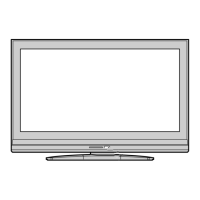
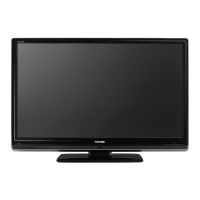

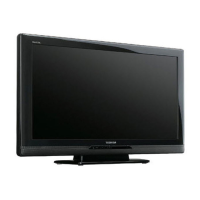
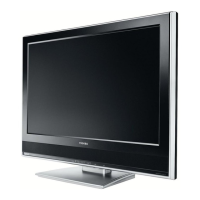
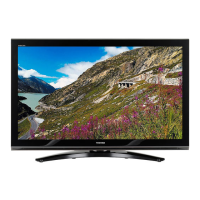
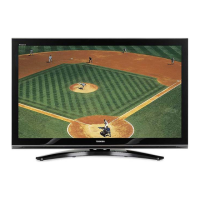
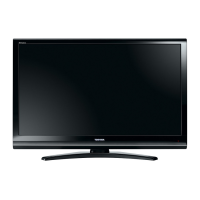

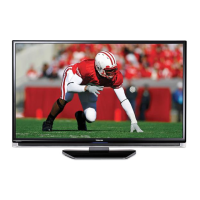
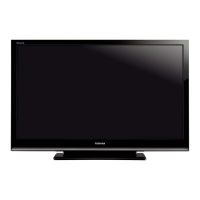
